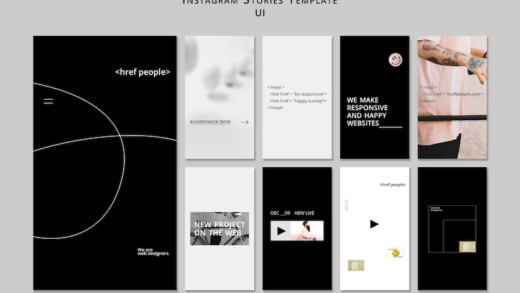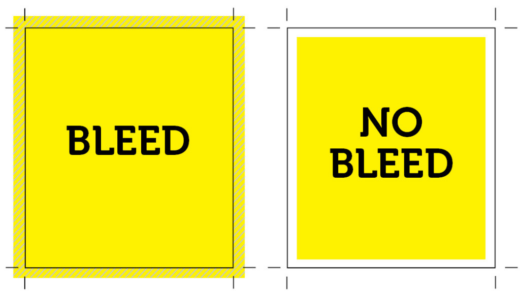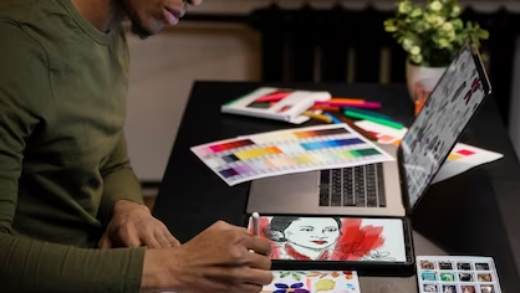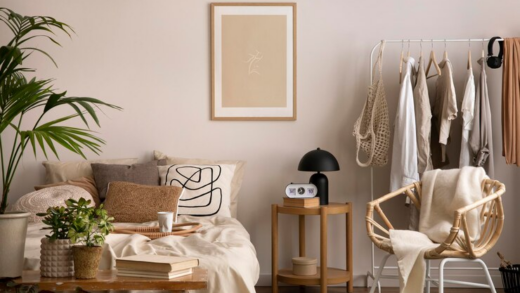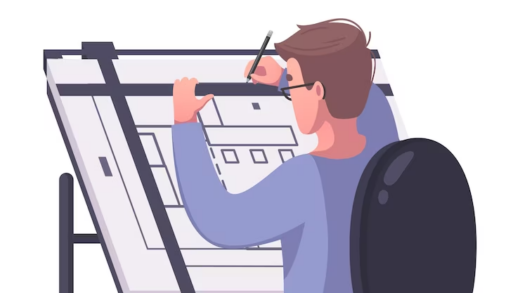As we reflect on the creative decisions of our past, many of us cringe at some of the choices we once made. Throughout our careers, we have all been beginners at some point, and it’s essential to remember that any criticism is not a personal attack, but rather an opportunity for growth.
To thrive in this competitive industry, we must adopt a client-centric approach to the design process. Seeing things from our clients’ perspectives becomes paramount. Businesses understand the significance of selecting a proficient designer at the top of their game. The design plays a pivotal role in shaping a company’s visual identity, making it distinct and memorable to the audience. So, what traits and habits should designers avoid if they wish to impress clients and secure repeat business? Let’s delve into the matter and discover the answer.
Attuned Designers: Understanding Beyond the Surface
Great designers possess an inherent ability to look beyond the surface and delve deep into the heart of a problem. Unlike their subpar counterparts who take offense at rejection, skilled designers recognize that their role extends far beyond creating aesthetically pleasing visuals or structures. They grasp the crucial importance of understanding the context, the users, and the emotions involved in every project.
Designers at their best immerse themselves in comprehending the intricacies of the challenges presented to them. They listen intently to what clients or users are trying to communicate, picking up not only the words spoken but also the underlying emotions and desires. This empathetic approach allows them to craft solutions that truly resonate with the intended audience.
In the realm of design, knowledge and technical expertise are undoubtedly valuable. However, truly remarkable designers go beyond mere technical prowess. They embrace a holistic approach, translating gathered information into tangible and meaningful designs that address real-world problems. This process involves thorough research, continuous learning, and staying up-to-date with the latest trends and advancements in their field.
Moreover, an adept designer doesn’t shy away from asking the right questions. They understand that a deeper understanding of the project’s context, objectives, and target audience is essential for success. By grasping the needs and preferences of their users, they prioritize simplicity and clarity in their designs, ensuring a seamless experience for those who interact with their creations.
Unlike lackluster designers who are fixated on short-term gains, exceptional designers think long-term. They consider the consequences of their decisions and strive for enduring solutions that stand the test of time. Their commitment to refining and improving their work showcases a dedication to delivering excellence rather than settling for mediocrity.
Sacrificing Usability for the Sake of Cool
The Pitfalls of Prioritizing Looks over Functionality
In the world of design, innovation and creativity often collide to produce remarkable products. However, not every innovative design is a success story. Some designs may look cool and visually appealing, but they end up being total flops due to their lack of usability and accessibility. These designs are the handiwork of terrible designers, individuals who are more preoccupied with showcasing their artistic talent rather than focusing on the needs of the users.
One of the key issues with terrible designers is their inability to adhere to guidelines and their disregard for testing their creations under different use cases. They tend to emphasize appearance over function, making their work aesthetically pleasing at the expense of user experience. In their quest to stand out with unique designs, they often put their personal preferences and ego ahead of understanding the user’s needs.
Striking the Balance Between Aesthetics and Usability
While a visually appealing design is undeniably important, it should never come at the cost of functionality or usability. The ultimate goal of any design is to draw users in, help them comprehend what to do, and enable them to accomplish their objectives effortlessly. A successful design leaves the user feeling satisfied with the solution, confident in their ability to navigate through the product seamlessly.
To achieve this, good designers understand the significance of placing the brand at the forefront of their designs. They meticulously define the project’s goals and align their work with the brand’s vision. These designers also think beyond the present and consider the long-term and scalable potential of their designs and code, envisioning the product’s growth over time.
Furthermore, they design with real-life scenarios in mind, considering a diverse range of contexts and situations that users may encounter. This approach ensures that the product remains usable and relevant across various circumstances, making it more adaptable to users’ needs.
Putting User Experience First for Marketplace Success
The difference between a good designer and a terrible designer can significantly impact a product’s success in the marketplace. A good designer prioritizes the client’s requirements and places user experience above their own artistic expressions. This means that the end result aligns seamlessly with the brand’s identity, making it a powerful tool for enhancing brand equity.
Terrible designers, on the other hand, may be swayed by the latest trends or their own artistic inclinations, but if their work fails to represent the brand effectively, it dilutes the brand’s impact and may even harm its identity. Therefore, it is crucial for designers to consider the brand’s essence and create designs that strengthen its position in the market.
Additionally, good designers recognize that a project is never truly complete without feedback from users. They remain open to criticism and use it as an opportunity to refine their designs further. In contrast, terrible designers often believe their work is finished prematurely, missing the chance to enhance the product based on real user insights.
Terrible Designers Overdo Everything: Embrace the Art of Restraint and Refinement in Design
In the vast and dynamic world of design, one intriguing phenomenon stands out: the success of self-taught designers. Gone are the days when traditional education was the sole marker of skill and talent. Today, designers can achieve greatness through their creativity, curiosity, and tenacity. However, even among these self-taught marvels, there lurks a pitfall that can lead to mediocrity and inefficacy in design.

Excellent design is an art of balance, a careful dance of elements orchestrated to convey a clear and powerful message. This artistry is often cultivated and refined through formal education in design. It imparts valuable insights into the essential elements of good, clean, and professional design. Mastery of concepts like composition, typography, and visual hierarchy empowers designers to craft visual experiences that captivate and engage.
Terrible designers, on the other hand, fall into the trap of excess. They overindulge their creative impulses and overcomplicate their designs, diluting the impact of their work. It’s as if they believe that more is always better. They cram multiple fonts into a tiny advertisement, shower designs with excessive Photoshop effects, and overlook the importance of margins and spacing.
A well-designed visual piece should direct the viewer’s attention toward its most critical message. However, bad designers miss this mark entirely. Their work becomes an overwhelming cluster of visual elements, all vying for dominance, and none effectively communicating the intended focal point. As a result, the viewer’s attention becomes scattered, leading to confusion and disengagement.
If you were to peruse the portfolio of a designer and find it overflowing with every single project they’ve ever undertaken, take it as a red flag. This abundance of work demonstrates an inability to discern and eliminate unnecessary design components. Being attached to our creations is natural, but it can blind us to the clutter that undermines our work’s true potential.
To transform one’s design portfolio from a sea of excess to a showcase of brilliance, designers must embrace the art of restraint and refinement. It’s essential to trim the excess and showcase only the most impactful and representative pieces. This act of curation serves a dual purpose. First, it highlights the designer’s best work, leaving a lasting impression on potential clients or employers. Second, it demonstrates the designer’s ability to make thoughtful decisions and exercise creative discipline.
When faced with the daunting task of curating their portfolio, designers should approach it with a fearless and critical eye. Be ruthless in eliminating pieces that do not align with your current artistic vision or level of expertise. Aim to cut the number of showcased projects by at least half. This process of creative pruning will invariably lead to an improved and more compelling portfolio.
Unleashing the Power of Original Ideas
In this realm of artistic expression, there lurks a breed of designers that fall short of delivering the uniqueness and brilliance that clients expect. We call them the “Terrible Designers.”
When you approach a graphic designer for a logo or an advertisement, you envision something extraordinary, a visual masterpiece that represents the essence of your brand. But when the designer readily accepts your initial concept without a second thought, alarm bells should ring. These “Terrible Designers” are more interested in quick turnarounds and easy paychecks than in creating something that will elevate your campaign’s success.
Design, like art, is subjective, and a great designer acknowledges this fact. They understand that the creative process thrives on collaboration between the designer and the client. While some clients might have a clear vision, a good designer knows that through a respectful exchange of ideas, both parties can elevate the project to new heights.
The Significance of Originality in Design:
Originality is the lifeblood of design. It is the spark that ignites curiosity, captures attention, and fosters a lasting connection with the target audience. Original ideas are the result of fearless exploration, bold experimentation, and a willingness to push boundaries. When a designer embraces originality, they bring to life concepts that challenge conventions, evoke emotions, and leave a lasting impact.
In today’s competitive landscape, where countless brands vie for consumers’ attention, standing out is not just an advantage; it is a necessity. An original design sets your brand apart, making it memorable and recognizable in a sea of sameness. It communicates a message that is authentic, distinct, and aligned with your brand’s values, evoking trust and loyalty among consumers.
Cultivating a Collaborative Design Culture:
A true design virtuoso understands when to say “no” and, more importantly, when to guide clients toward better alternatives. They are not mere order-takers but visionaries who can elevate an idea and transform it into something extraordinary. Cultivating a collaborative design culture is vital for nurturing this artistic relationship.
When designers and clients engage in a productive exchange of ideas, the design process becomes a journey of discovery. A good designer knows how to delicately challenge a client’s preconceptions, steering them towards unexplored avenues that align with their objectives. Through open dialogue and a genuine willingness to listen, designers can unveil new perspectives that clients might not have considered initially.
Unveiling the Secret of Terrible Designers: The Neglected Spell Check
As mortal beings, we are destined to err, but when it comes to design, some mistakes are more telling than others. Picture this – you receive a beautifully crafted design, but upon closer inspection, you notice the glaring spelling and grammatical errors scattered throughout the text. It’s like finding a fly in the most exquisite cup of tea. This alarming revelation speaks volumes about the designer’s attention to detail and their level of expertise.
Spelling mistakes, like neon warning signs, signal that the designer may still have a lot to learn. It goes beyond a mere oversight; it might even indicate a lack of care or dedication towards the project. In the realm of design, where precision and finesse are paramount, such errors can tarnish the overall impression of the work.
One plausible explanation for these linguistic blunders could be that the designer is primarily focused on the visual aspects of their work. Their passion might lie in creating stunning visuals that captivate the audience’s eyes, but they haven’t fully grasped the intricate dance between text and design elements within the composition. After all, design is an art that combines various components, and text plays a crucial role in conveying messages effectively.
Now, one might argue that designers often receive text content from clients or writers, and they are not responsible for its accuracy. While this holds some truth, it does not absolve designers of their duty to ensure that the text is seamlessly integrated into the visual design. A well-crafted design should harmoniously complement the text, accentuating its essence rather than distracting from it.
As a remedy, seeking a fresh set of eyes to review the project can work wonders. When you’ve been engrossed in your work for extended periods, it’s easy to become blind to your own mistakes. Collaborating with a peer or seeking feedback from someone outside the project can illuminate flaws that escaped your notice. Constructive criticism is an invaluable tool for growth and improvement.
Conclusion
In conclusion, recognizing the signs of a bad interior designer is crucial in ensuring a successful and satisfying home design experience. Throughout this article, we have identified several red flags that should raise concerns for anyone seeking professional design assistance. An interior designer should be a skilled, attentive, and empathetic professional, capable of bringing your vision to life while considering your lifestyle, preferences, and budget. By being aware of the signs of a bad interior designer, you can make informed decisions and avoid potential disappointments and financial setbacks.
